Playground Safety 101:
The Complete Guide
In this comprehensive children’s playground safety guide, we’ll talk about playgrounds, compare old and new playgrounds, what’s changed over the years, the things about old playgrounds we miss, potential playground hazards, keeping kids safe and more.
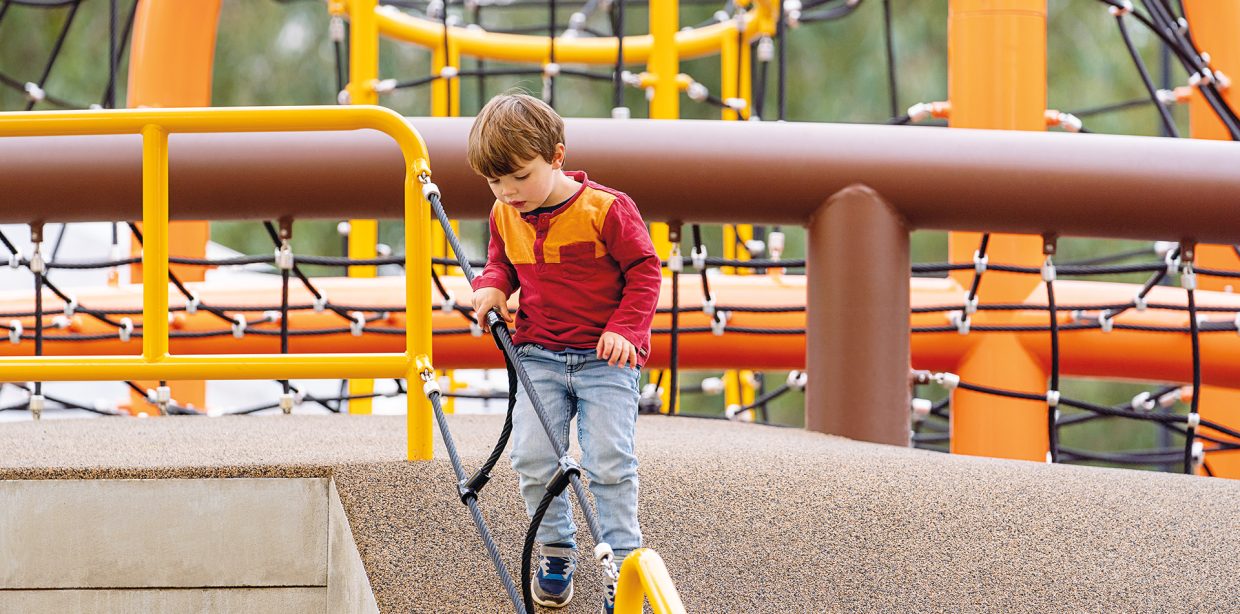
Share post
A children’s playground offers more than just fun. Children who spend time in playgrounds will experience many cognitive, social and health benefits.
Playgrounds provide children with opportunities to solve problems, test their physical strength and practice their social skills. Playgrounds are also settings for unstructured free play, which is essential to children’s development.
In this comprehensive children’s playground safety guide, we’ll talk about playgrounds, compare old and new playgrounds, what’s changed over the years, the things about old playgrounds we miss, potential playground hazards, keeping kids safe and more.
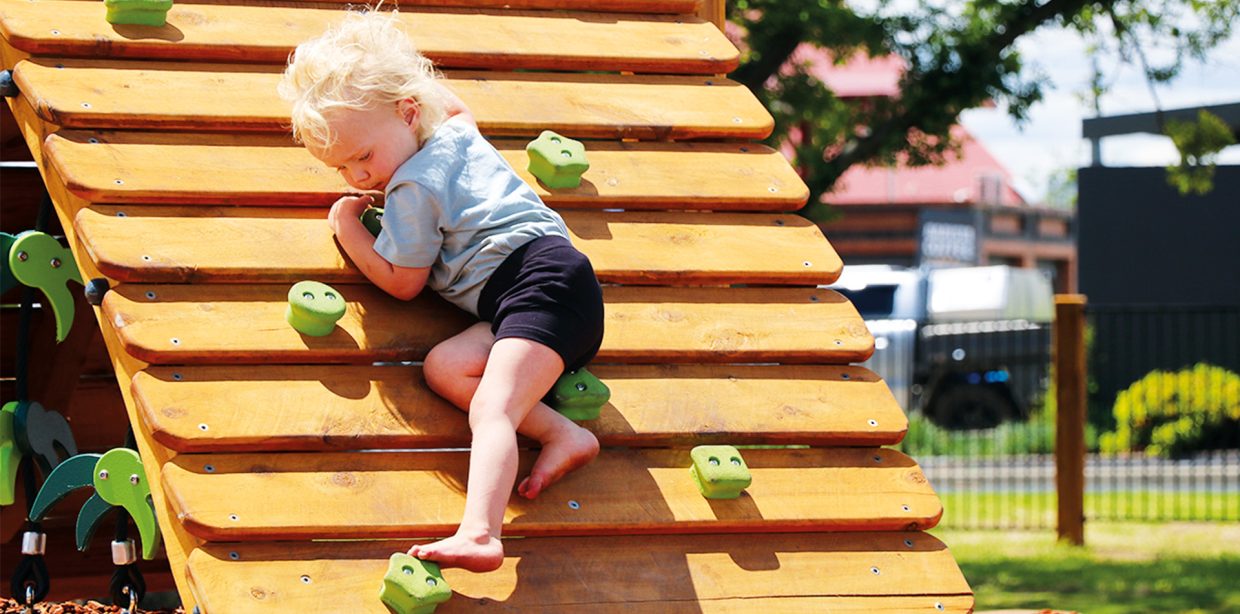
Old vs new playgrounds:
What has changed?
Since the inception of playgrounds as developmental aids in the 19th century by psychologists like Friedrich Fröbel, and the first-ever purpose-built public children’s playground opened in 1859 in Manchester, England, a lot has changed.
Even when comparing playgrounds of the 1980s and 1990s to the playgrounds of today, one may be hit by some sort of indescribable nostalgia – missing some elements of the old playgrounds – whilst appreciating the safety features in new playgrounds.
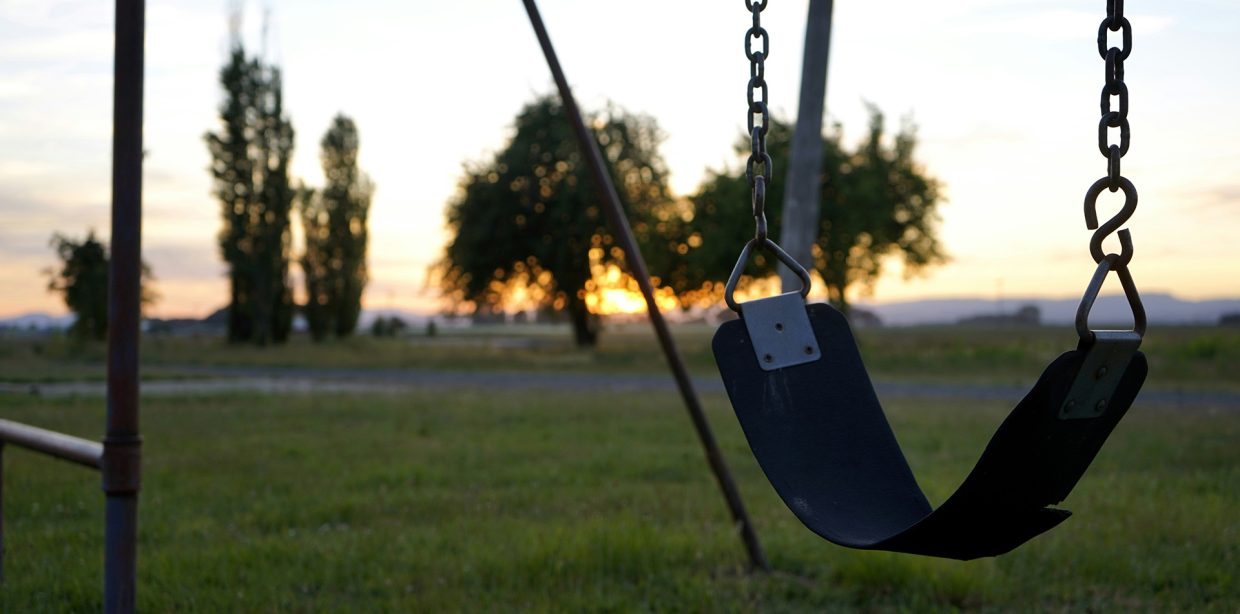
Old playground risks and hazards
Back in the day when children’s playground safety wasn’t a major concern or safety standards didn’t exist, cuts, scrapes, bumps and burns were simply treated as part of a child’s everyday existence.
Kids didn’t expect their parents to file a lawsuit against a playground equipment manufacturer because something broke or came loose. It didn’t matter much if a child ended up being hospitalised and had to wear an elbow cast for a few weeks after taking a fall.
If anything, getting an elbow cast made children feel special, and their friends signed their name on it for posterity. Besides, physical injury from play was expected. Children could fall, bump into something or have some minor injuries whilst enjoying themselves at the playground or playing games with friends, this was just part of life.
In retrospect, one does realise the dangers that lurked in playgrounds long before Australian playground standards were conceived.
Some of these dangers included:
- Steel slides were often installed into the sun and burned hot during the height of summer. Children just put up with the extreme heat but there was some risk of suffering from burns.
- Some slides were very high with insufficient guardrails, so the possibility of falling while on the way down was very real.
- Children used slides and other play equipment unsupervised. Sometimes two or three kids would go down a slide at the same time. When a slide had no guard rails, there was a very high chance of the children falling on each other and getting injured.
- Nobody told kids that putting their hands or fingers under the central pivot point of the seesaw meant a potential injury.
- Some seesaws had broken handles, but no one was there to supervise or tell kids not to use them. Seesaw-related injuries were quite common, as the teetering bars could hit a child close by anytime or lift the riders too high up, posing the risk of a serious fall or injury.
- Kids would go up and down the merry-go-round while it was on full speed, so a lot of kids got hit or thrown off into the dirt whilst attempting such stunts.
- Monkey bars were set too high, so getting tired and slipping in the middle of those meant the possibility of falling and breaking an arm or leg.
- Witch’s Hats are cone-shaped single circular swings that spin around a metal pole. Up until the 2000s, the Witch’s Hat remained a playground staple, although it was already deemed unsafe. The risk of being crushed against the metal pole was a common concern, although kids disregarded this for the thrills it offered. Also, at times, young and older kids would use it at the same time. This usually led to problems with balance and some minor injuries.
- Parents and guardians hardly ever came to check if there were any loose screws, corroded areas or cracked surfaces in the play equipment, and playground maintenance was minimal. As long as the play equipment was standing, it was deemed okay to use.
- There were no considerations whatsoever concerning soft fall. The primary saving grace was when playground surfaces were grassy or muddier than rocky. The various types of surfacing materials did not yet exist back then.
You can probably think of other things that made old playgrounds dangerous places. But that sense of nostalgia is difficult to shake off, even when the benefits of having and complying with Australian playground safety standards are already known.
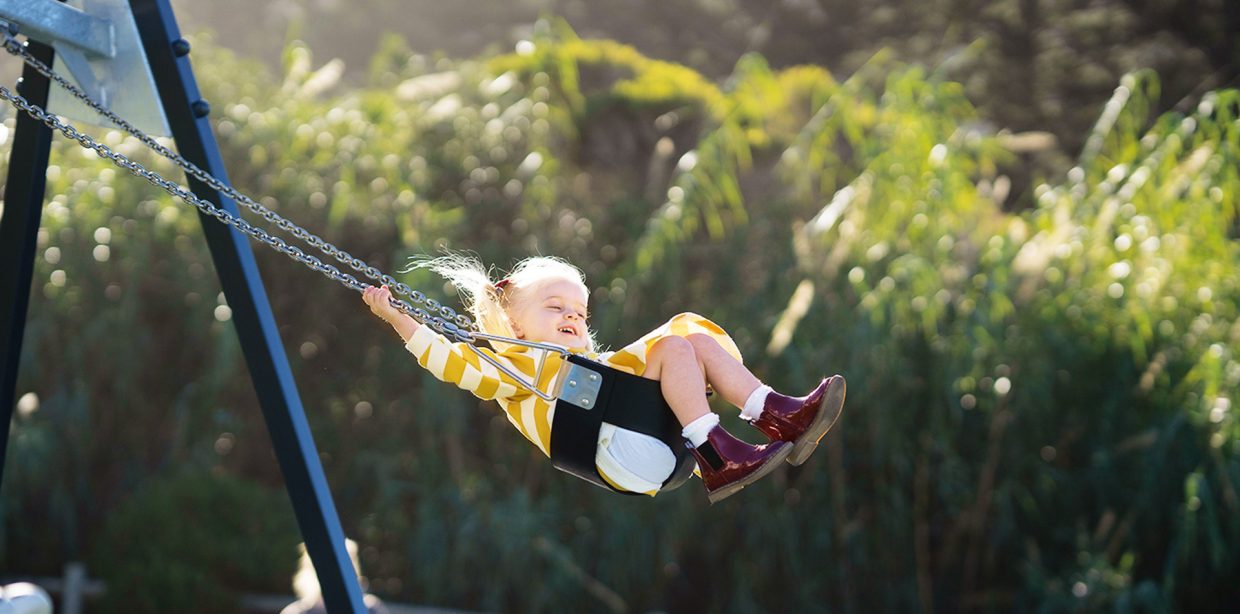
Playground safety standards
Playgrounds have gone through quite a cycle over the last 30 years to get back to where they are now.
Around the 1980’s and into the 1990’s there was a push in society towards litigation for any injury sustained in the public realm and in places like public playgrounds.
At the same time the idea of continuous play structures, which came from the USA, was introduced into Australia. That is, the concept of play structures that offer children a series of play events in sequence or around each other as they progress through the playground.
This was a new idea that contrasted with the traditional playground equipment that was common up to that point. Play equipment prior to the introduction of continuous play consisted of independent play structures such as jungle gyms, high trapeze bars, freestanding monkey bars, maypole spinners, steel slides with very low side rails, swing sets, plank swings, rotating witches’ hats and the very traditional plank see-saws which were simply a timber plank pivoting on a central bar.
As the push towards litigation gathered pace, some playground suppliers were introducing the continuous play concept to the Australian market at the same time. The new continuous playground equipment was built to comply with new stringent safety standards released in the 1980’s and it offered councils, schools and other stewards of public playground equipment to provide a solution that allowed the children to play.
Unfortunately, this new play environment, whilst it posed a greatly reduced number of hazards (good), the new style of play equipment also greatly reduced the fun and the challenge (bad) and virtually eliminated any foreseeable risk taking of the old style of play equipment, which has always been the best way to build resilience in children.
However, because this new play methodology along with the safety that could be built into a continuous play system provided a way for the playground equipment buyers to “solve a problem” this type of play equipment swept across the country rapidly, almost entirely replacing the older traditional types of play equipment that many older adults of today grew up using.
The ultimate outcome of this new type of play equipment being readily embraced by all was that playgrounds started to become alarmingly similar in council parks, schools, childcare centres and anywhere that children gathered, until we truly had “cookie cutter” play equipment in nearly every park and playground, as well as it being extremely boring and predictable to use!
The flow on effect of this was that public playground equipment began to fall from favour in the eyes of the children, parents, educators, childhood occupational therapists, charities, funding bodies, landscape architects, play space designers, many influential people in the space of urban design and community facility and even Local Councils themselves who have always been the main buyers of play equipment.
In turn, this meant reduced funding for increasingly unattractive play equipment as it was not seen to be giving a good return on investment to the Government authorities that were largely funding the construction of public playgrounds through levies and taxes.
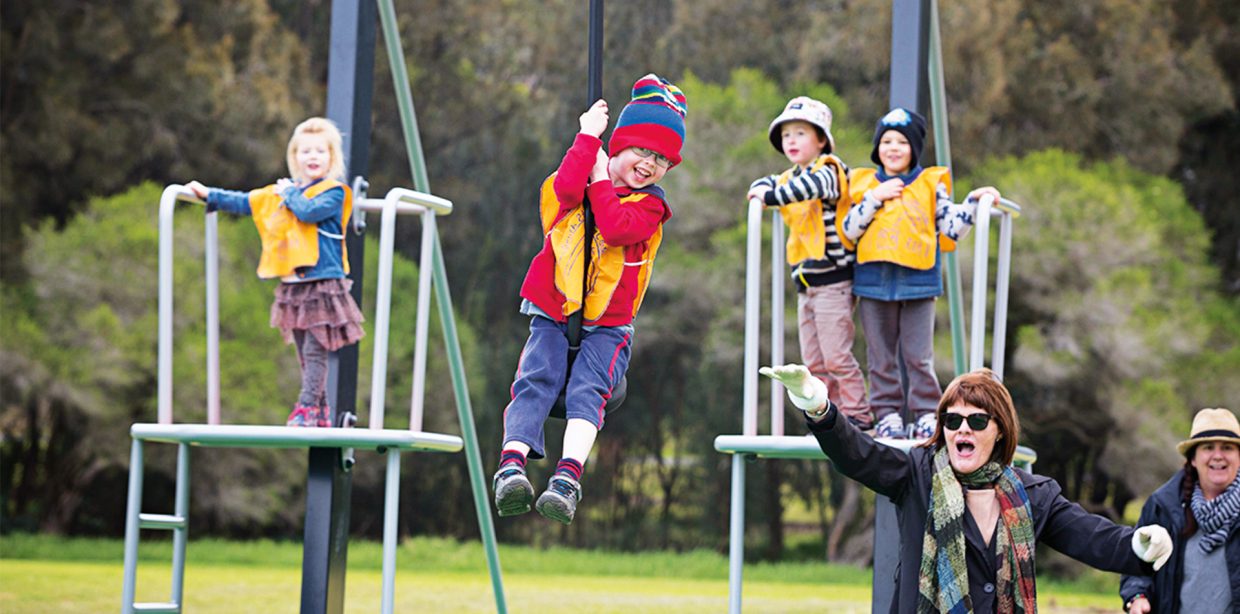
A turn for the better in playground design
As enthusiasm for new playgrounds and funding them was seriously dwindling into the late 1990’s, help for the whole idea of public playgrounds finally came from a most unexpected source. In the early 2000’s, as Australia’s momentum towards a more and more litigious society gathered speed, State Governments across Australia introduced various versions of what is now generally known as the Civil Liability Act in an attempt to stem the tide of litigation.
This is a State law legislating that people choosing to participate in activities in public spaces and other venues, do so at their own risk and are responsible for their own actions. There are obvious requirements on the providers of the activities, such as compliance with recognised Australian Safety Standards for play equipment and play spaces, but these can be readily complied with by following good practice in due diligence and duty of care.
For the owners and providers of public playgrounds this meant the provision of play equipment for the public was once again feasible to consider without the fear of unnecessarily being exposed to overt litigation attempts by the general public.
At the same time, around 2004, there was the happy coincidence of new Australian Playground Safety Standards being released, which were based closely on the much more generous European Safety Standards for Playgrounds that Europe had used for some time with positive effects on playground design there.
This had the brilliant outcome of increasing the interest in play and public playgrounds from all the parties involved, but first and foremost from the children themselves!
Play was back!
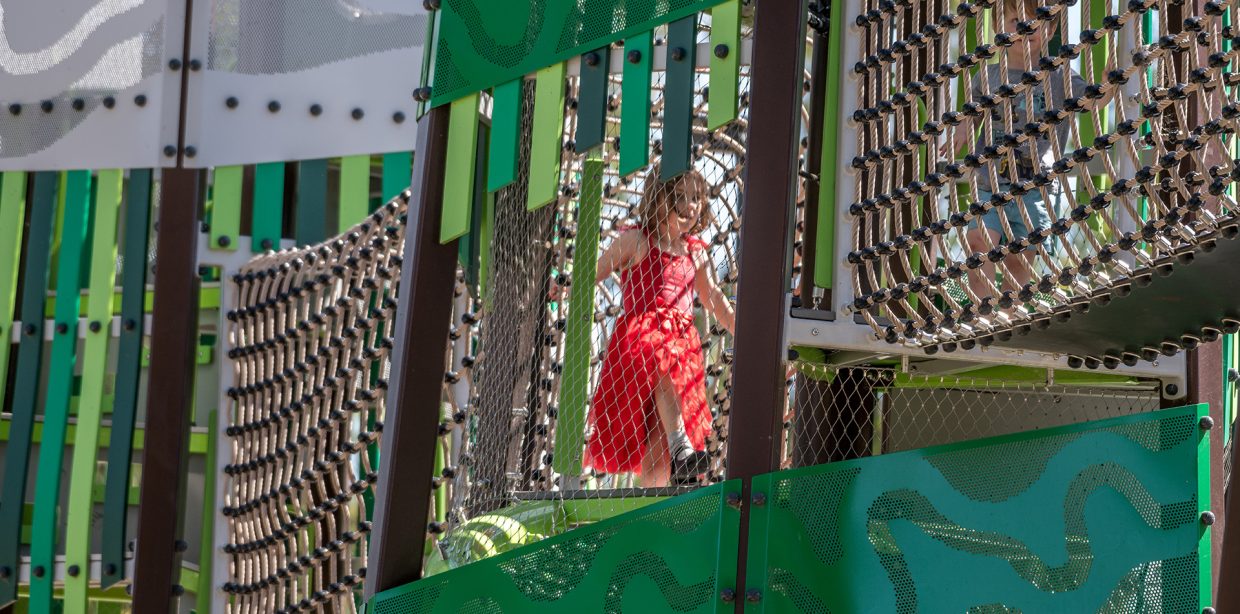
The effect of new safety standards:
What has changed for the better
Since the introduction of the new Australian Safety Standard for Playgrounds there has been a massive increase in the design and development of new, exciting, challenging and much more adventurous playgrounds and play equipment in Australia.
The adoption of the European Standards as the framework for the new Australian Standards also had the effect of “greenlighting” some reputable suppliers from Europe, who up to that time had been regularly in conflict with the Australian Standards when their play equipment products did not comply with the local playground standards.
A wider range of play products became available to playground designers and playground buyers across Australia and it subsequently increased the competition for high quality local Australian manufacturers of play equipment, like Moduplay, as well.
The new Playground Safety Standards allowed for play equipment that was higher than previously allowed. This ultimately made way for products like the Moduplay Skytowers. The concurrent introduction of rope play manufacturing in Australia by Kaebel Leisure in 2004, industry along with the allowance of greater height play equipment spawned many new products and ranges of challenging play equipment such as Moduplay Wildnets.
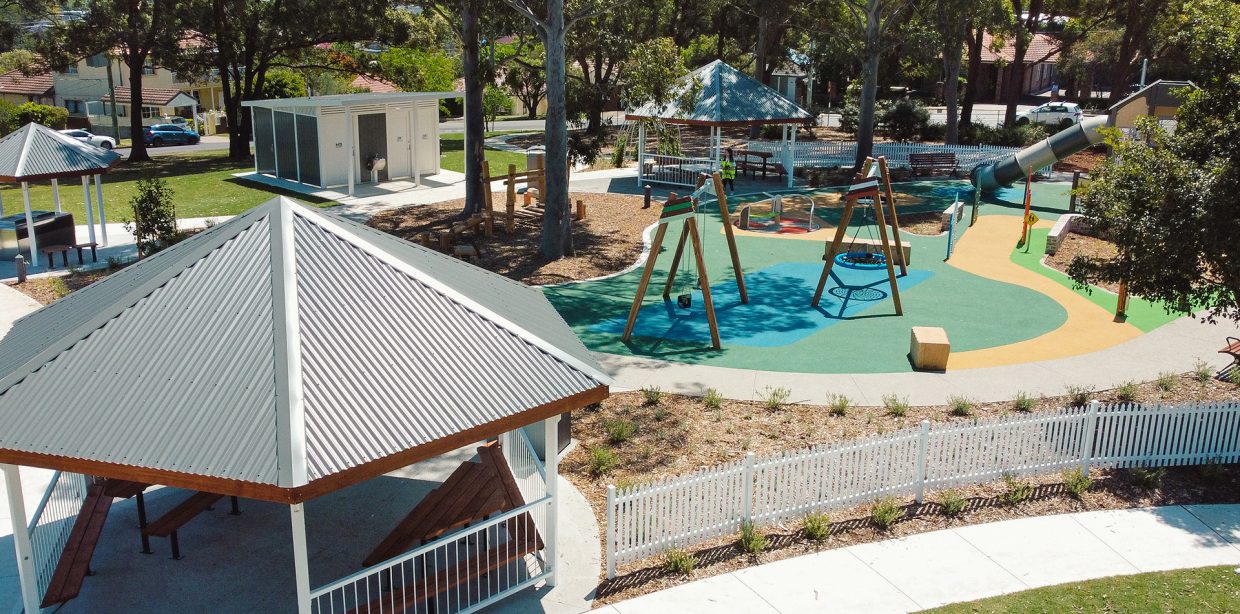
Ensuring kids’ safety in the playground
Child injury statistics in Australia reveal that in 2017, 8.3% of child hospital visits were related to injuries arising from falls from playground equipment.
The important point to note here is the injuries are rarely due to playground design failure which is testament to our very good Australian Safety Standards for Playgrounds. Almost all playground injuries are classed as minor and the majority are due to awkward falls that even adequate and well maintained soft-fall could not prevent.
The small number of remaining injuries are due to inadequately maintained soft-fall surfacing or equipment that has not been serviced when due.
The very high standard of compliance enforced by the majority of playground owners (Local Government being the pre-dominant owners of these assets) has endowed Australia with an excellent standard of safety in playgrounds right across the country.
While playground safety standards in Australia help ensure equipment designers, manufacturers, suppliers and operators are in compliance with those, parents must be advised to do their part in ensuring their children’s safety.
Parents with their children, carers and other users of playgrounds in Australia can take some simple steps to ensure their visit to the local playground is an enjoyable experience:
- Plan the trip and take adequate food and water if visiting for more than a few minutes
- Be aware of the location of the nearest toilets
- Ensure their children are appropriately dressed for the weather.
- Instruct their children to use playground equipment that’s suitable for their age and physical abilities
- Position themselves as models of active play and think of clever ways to encourage their children to enjoy the play equipment in their own ways whilst playing safely
- Interact with others at the playground creating safe games as you go
- Keep a watchful eye on very young children, especially in the playground.
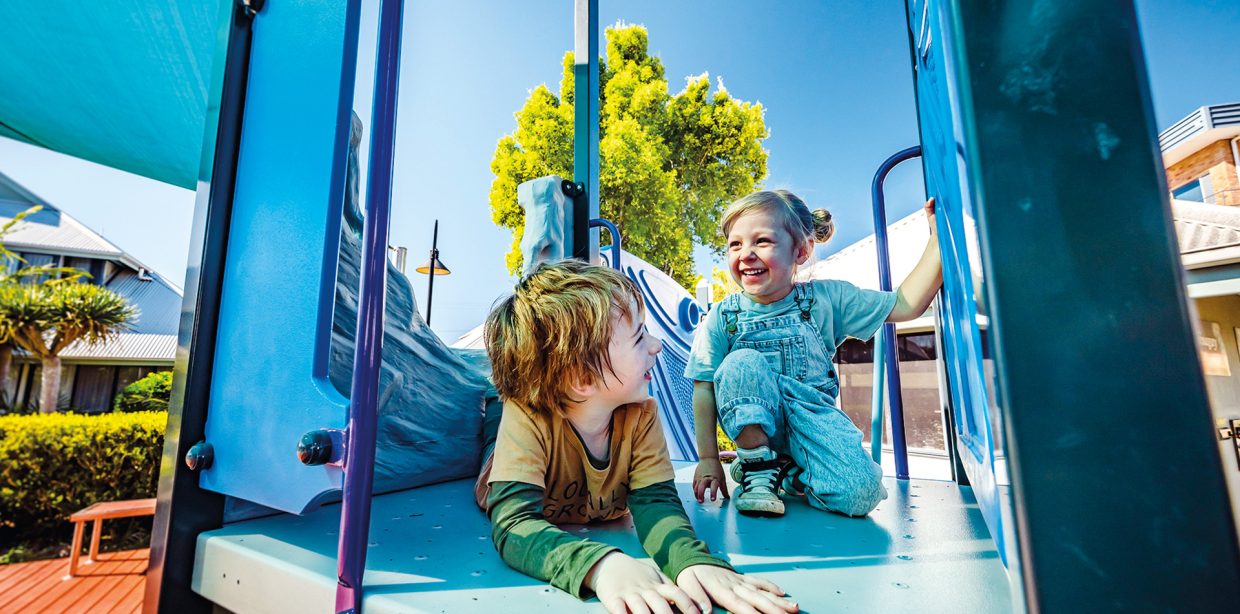
Building safe playgrounds across Australia with Moduplay
As an industry stakeholder Moduplay takes serious measures to ensure they remain compliant with Australian playground standards for safety.
At Moduplay, children’s safety remains a priority at all times, and this is reflected in the way we design, manufacture and install playground equipment.
As industry insiders, we take our commitment to safety very seriously. We also keep abreast of new safety standards, and are often involved in the formulation and introduction of new Playground Safety Standards or amendments to existing.
Moduplay provides total peace of mind with a comprehensive Product Warranty and Guarantee System that accompanies every single Moduplay product manufactured. Our playground construction projects are protected by comprehensive liability insurance covers during construction and post completion.
If you are considering a provider of innovative, fun, attractive and Safety Standards-compliant playground equipment for your project reach out to Moduplay.
For more information on Moduplay playground equipment, please reach out to us.
Keep in touch
Get design inspiration, business tips and new product alerts straight to your inbox with our Moduplay Newsletter, the Playground Press once every two months.


